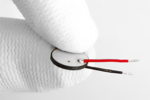Medical Device Design & Development
INDUSTRY PERSPECTIVES
-
Integrating Quality Processes And Documentation After A Merger
If your company is undergoing a merger, you must juggle operations while ensuring minimal disruptions. You'll need a holistic view of QMS and SOPs to harmonize procedures.
The transition to a Quality Management System Regulation (QMSR) has effectively superseded the explicit medical device design controls CFRs and associated FDA guidance, though their essence lives on.
Medical device developers must plan and design for what happens once their device leaves the manufacturing facility. Consider how a device will make the journey to its intended users and how those users will work with the device.
How can you be cost-effective in the face of the cost of compliance with the EU's Medical Device Regulation (MDR)? This article shares tips.
Scheduling daily team huddles, killing deadlines, and making space to reflect and grow are all agile teamwork elements that contribute to rapid innovation in medtech. Here's why.
WHITE PAPERS & CASE STUDIES
-
How Medical Technology Benefits From Piezoelectric Transducers
Discover the transformative potential of piezo technology in active microfluidics. Learn how unconventional drives redefine precision, efficiency, and innovation.
Discover RFID's advantages in medical devices, guidance for supplier selection, and success stories from healthcare's RFID integration, offering valuable insights and practical examples.
Discover the importance of integrating RFID technology into medical devices for improved tracking, supply chain management, and patient safety — enhancing security, traceability, and compatibility.
Explore the types of non-magnetic surface-mount device (SMD) capacitors, including trimmer capacitors, that are crucial for maintaining reliability and optimal performance in POC MRI machines.
Preventing IP theft in medtech manufacturing is crucial for both revenue and patient outcomes. Learn the essential questions to ask your partners, ensuring your designs remain confidential.
MEDICAL DEVICE DESIGN & DEVELOPMENT
Medical device design and development is the cyclical process of creating a device for a specific task or set of tasks, and then continuously reevaluating its effectiveness and improving upon it until the device reaches obsolescence. Design and development begins with ideation and the creation of a concept that, if found to be both fiscally and clinically viable, is then designed, engineered, and prototyped. This preclinical period includes bench testing — accomplished through simulated use of the product — and animal testing, along with any necessary redesign work.
Throughout the process, the proposed medical device, and the process by which it will be manufactured, is examined for flaws that may negatively impact the device’s safety, market viability, regulatory acceptance, customer satisfaction, usability, or profitability. Any shortcomings are corrected, and the improvements applied to the final design. Due to the wireless connectivity capabilities of many modern medical devices, cybersecurity and interoperability also must be incorporated into the design. Clinical testing is conducted, using human subjects, to further expose flaws and confirm product strengths. Once both the product design and the manufacturing process have been validated and approved by the U.S. Food and Drug Administration (FDA), production and commercialization of a device may begin.
LATEST HEADLINES
-
Noninvasive Optical Sensors Provide Real-Time Brain Monitoring After Stroke2/21/2018
Each year, nearly 800,000 people in the U.S. experience a stroke, and almost 90 percent of those are ischemic strokes in which a clot cuts off blood flow to part of the brain. To prevent further injury, blood flow to the brain must be restored as quickly as possible.
-
Embrace Becomes First FDA-Cleared Seizure-Monitoring Smart Watch2/5/2018
Empatica Inc has received clearance from the FDA for Embrace, its award-winning smart watch. Embrace uses AI (advanced machine learning) to monitor for the most dangerous kinds of seizures, known as "grand mal" or "generalized tonic-clonic" seizures, and send an alert to summon caregivers' help.
-
Researchers Create Fiber Optic Sensors That Dissolve In The Body2/5/2018
For the first time, researchers have fabricated sensing elements known as fiber Bragg gratings inside optical fibers designed to dissolve completely inside the body.
-
NUS Researchers Develop Wireless Light Switch For Targeted Cancer Therapy1/30/2018
A team of scientists from the National University of Singapore (NUS) has developed a way to wirelessly deliver light into deep regions of the body to activate light-sensitive drugs for photodynamic therapy (PDT).
-
TU Wien Develops New Semiconductor Processing Technology1/22/2018
Extremely fine porous structures with tiny holes - resembling a kind of sponge at nano level - can be generated in semiconductors.
-
Tyndall, Sanmina Partner To Develop Sub-GHz Wearable Health Monitoring Platform1/10/2018
Tyndall and Sanmina Corporation have announced a research collaboration, which will focus on the development of a novel wireless technology for a commercial wrist-worn health-monitoring platform.
-
An Organ-On-A-Chip Device That Models Heart Disease1/2/2018
When studying diseases or testing potential drug therapies, researchers usually turn to cultured cells on Petri dishes or experiments with lab animals, but recently, researchers have been developing a different approach: small, organ-on-a-chip devices that mimic the functions of human organs, serving as potentially cheaper and more effective tools.
-
Nanowire Device Holds Promise To Detect Cancer With A Urine Test12/26/2017
Cells communicate with each other through a number of different mechanisms. Some of these mechanisms are well-known: in animals, for example, predatory threats can drive the release of norepinephrine, a hormone that travels through the bloodstream and triggers heart and muscle cells to initiate a "fight-or-flight" response.
-
Developing The First Pediatric Heart Valve Designed To “Grow” With The Child12/20/2017
Each year 40,000 babies in the U.S. are born with a congenital heart defect, often caused by a defective heart valve, which is estimated to account for 8,000 to 13,000 new cases in the U.S. alone.
-
Mass Spectrometric Imaging Technique Makes Diagnosis Easier And Smarter12/17/2017
A team of researchers at DGIST has recently developed a technology which enables to acquire a high resolution mass spectrometry imaging in micrometer size of live biological samples without chemical pretreatment in the general atmospheric pressure environment.



